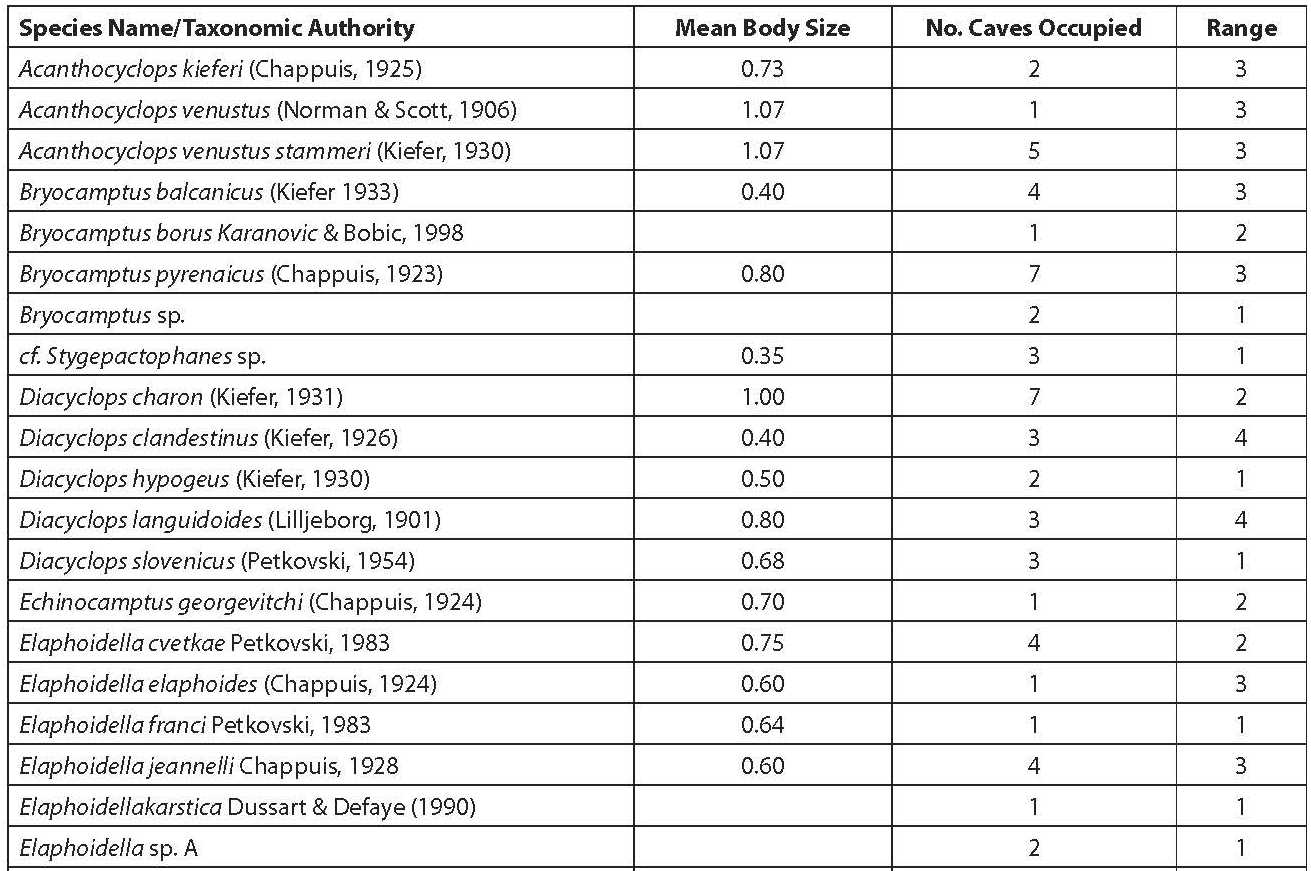What Does the Distribution of Stygobiotic Copepoda (Crustacea) Tell Us About Their Age?
DOI:
https://doi.org/10.3986/ac.v36i1.211Abstract
Geographic distribution of stygobionts is often used to estimate age of a group by assuming vicariant speciation with little or no subsequent dispersal. We investigated the utility of using distributional data for Slovenian stygobiotic copepods by assuming that dispersal is a way to measure age of a species. We list some species of Copepoda that, on the basis of their range and frequency of occupancy within their range, should be older. Body size is not predictor either of range or frequency of occupancy.
Downloads

Downloads
Published
How to Cite
Issue
Section
License
Authors guarantee that the work is their own original creation and does not infringe any statutory or common-law copyright or any proprietary right of any third party. In case of claims by third parties, authors commit their self to defend the interests of the publisher, and shall cover any potential costs.
More in: Submission chapter




